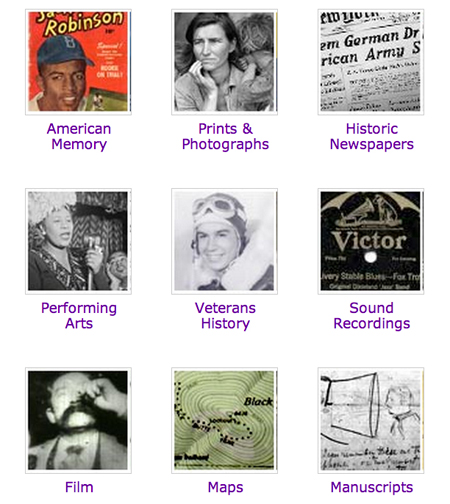Selecting Primary Sources: Criteria for Classroom Use

Primary source analysis promotes information literacy, a vital skill for competent citizens. When selecting primary sources to use with students, keep the criteria listed below in mind to ensure valuable learning experiences.
KNOW YOUR STUDENTS
Engagement
- Will your students want to dig deep, ask questions, and learn more about the primary source?
- Is the source interesting?
- Is the source relevant to a current unit or theme?
- What primary source type(s) will best engage students?
Student Identity
- Does the primary source reflect students’ cultures and lived experiences?
- Does the source encourage students to reflect on their own or another’s culture?
- Does the source allow your students to see themselves in the history?
- Does the source reinforce stereotypes that might cause harm to your students?
Appropriateness
- Is the content of the primary source suitable for your students?
- Is the source too simple or too complex?
Length
- Will the length of the primary source affect student comprehension?
- Would an excerpt be more appropriate than the source in its entirety?
Vocabulary
- Is the vocabulary used in the primary source at an appropriate level?
- Will your students be able to decode the text or decipher the audio?
- Will outdated terms need to be defined?
CONSIDER HISTORICAL CONTEXT
Background knowledge
- Will students be familiar with any of the people or personal, social, cultural, or political events happening around the time the primary source was created?
- Will students need to be introduced to certain information in order to interact successfully with the source?
Contextual clues
- Are there clues within the primary source (not the bibliographic record) that will help students place the source into historical context?
- Will students be able to identify clothing or technology from a certain time period?
Creator & creation date
- Are the creator’s name and creation date available on the primary source or in the bibliographic record?
- Would additional information about the creator be useful when analyzing this source?
- Was the source created close to the time that it represents?
Additional bibliographic information
- How detailed is the bibliographic record?
- Does the bibliographic record provide historical context?
- When and what bibliographic information should you reveal to students?
- Will Library catalog notes or other markings distract students or interfere with their ability to place the source into historical context?
- Do your students need a source with a more descriptive bibliographic record to help with further research?
THINK ABOUT PERSPECTIVE
Audience, purpose & bias
- Does the primary source provide enough clues to identify the intended audience and purpose (idea, agenda, etc.)?
- Is there evidence of a particular bias?
Personal bias
- Consider your own beliefs about a historical event or issue. By selecting a particular primary source, are you inadvertently presenting one point of view over another?
- If you plan to use an excerpt of a source, is the meaning of the entire source preserved?
Variety
- When using more than one primary source, have you selected items that present different perspectives?
- What types of sources will best help students construct knowledge?
EVALUATE SOURCE QUALITY & FORMAT
Source quality
- Is text legible?
- Will handwriting impact your students’ understanding?
- Is the image sharp and bright enough?
- Is the audio loud and clear enough?
- Does background noise interfere with spoken words?
- Will students understand accents?
- Is there a transcript?
Physical format
- Are you able to zoom into details on the digitized primary source?
- Can your print out these details or is the primary source best used in its digital format?
File format
- Are you using the highest quality primary source available on the Library’s website?
- Is the source clear enough for students to locate important details and make reflections about what’s happening?
PLAN FOR IMPLEMENTATION
Instructional goal
- What is the overall primary source activity or project goal?
- What questions are you trying to answer?
- What problem are students trying to solve or what product are they trying to create?
Activity types
- How will the primary source(s) be used (as the basis for class discussion, written reports, in-class presentations, role playing, etc.)?
Classroom management
- Are the primary sources best used in individual, small group, or class activities?
Time
- How much time must I allocate for this primary source activity or project?
Assessment
- What output(s) will this primary source activity or project generate?
- Will the activity or project be assessed quantitatively, qualitatively, or both?
RELATED RESOURCES
PSN blog posts
- Considering Historical Context
- Learning Activity Criteria
- Point of View & Perspective
- Selecting Primary Sources That Deal with Difficult Issues
- Selecting, Excerpting & Modifying Primary Sources
- Selecting Primary Sources for Research Projects
- Tertiary, Secondary, Primary
Teaching with the Library of Congress blog posts
- Selecting Primary Sources, Part I: Knowing your Students
- Selecting Primary Sources, Part II: Considering Historical Context
- Selecting Primary Sources, Part III: Thinking about Perspective
- Selecting Primary Sources, Part IV: Considering Quality
- Selecting Primary Sources for the Classroom: Considering Moment of Use
- Selecting Primary Sources for the Classroom: Supporting Student Research Skills
- Selecting and Using Primary Sources with Difficult Topics: Civil Rights and Current Events
